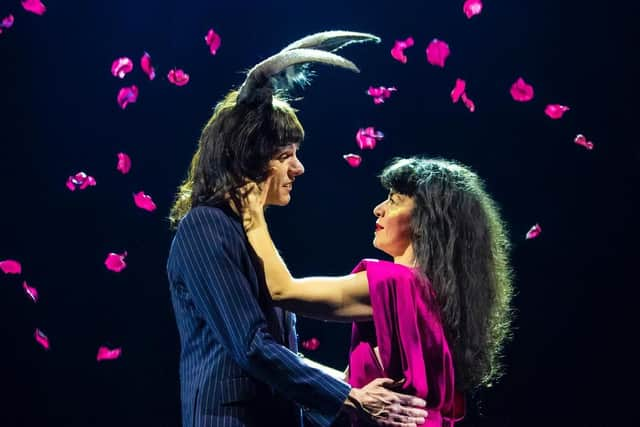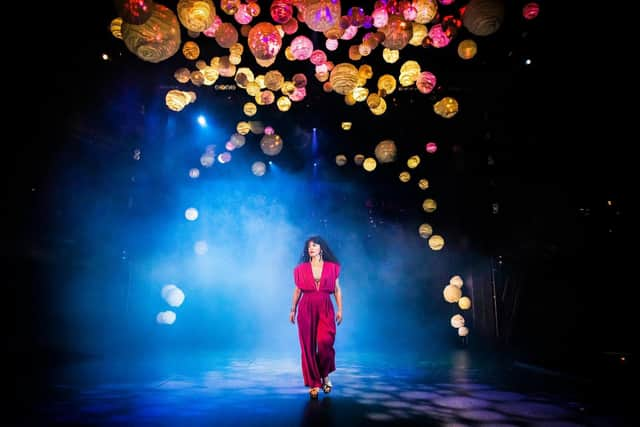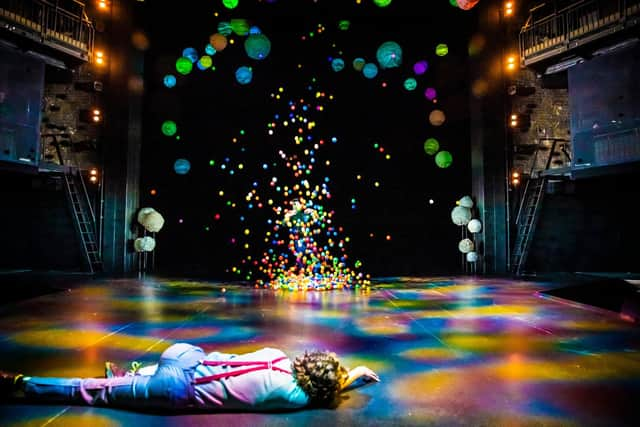RSC A Midsummer Night's Dream review - Mathew Baynton and magic bring much-needed cheer


What a tonic. A dismal February is enlivened no end by this sharp and sparkling production; a play that often feeds off the headiness of summer is a somewhat different experience here, but goodness, it’s welcome.
In its publicity, the RSC has understandably made much of Bottom being played by Mathew Baynton, cherished by many for his comic roles in the BBC’s Horrible Histories and Ghosts. It has also highlighted the involvement of John Bulleid, an expert in bringing the art of illusion to theatre. But what really stands out in this production is its punchiness: this Dream feels a lot like reality.
Advertisement
Hide AdAdvertisement
Hide AdThat’s saying something, given this is a play which a man is transformed into a donkey, and becomes an object of infatuation for the Queen of the Fairies. But perhaps the most outstanding scene of the evening is one in which two best friends, Hermia and Helena, rage at each other with tangible love. There is humour, but it is also as gritty as any kitchen-sink drama, every syllable mined in fury. Hermia, insulted for her stature: “How low am I, thou painted maypole? Speak! How… low… am… I?”


With so many elements and tones, the play could become rather diffuse and bitty. But Eleanor Rhode directs proceedings with admirable coherence. The show opens arrestingly with a bombardment of flickering retro TV projections – a test card here, a page from Ceefax there. The theme is pursued elegantly: black-and-white turns to colour; the ingenious ending evokes the dying light of the cathode ray tube. This being a time of year when we are more likely to spend our nights in front of the screen than in enchanted meadows, it makes sense. The RSC’s most famous staging of the play had it taking place in a white box; here, the box is black, like the one in the corner of your old living room, and Lucy Osborne’s design makes it look wondrous.
Baynton rightly takes star billing: judging from the reaction of some in the audience, he’s helped flog more than a few tickets. His Bottom has a touch of his painfully preening Ghosts character, Thomas. And if anything, Bottom makes better use of Baynton’s gifts: he is a superb clown, getting laughs with almost every movement and gesture and expression. But the production abounds in comic talent, from Ryan Hutton’s preposterous Lysander to Helen Monks’s misguidedly enthusiastic Peter Quince to Laurie Jamieson’s deadpan Snug to Emily Cundick’s begrudging Snout.
Boadicea Ricketts as Helena and Dawn Sievewright as Hermia are no less capable of comedy, but they also lend a necessary edge, while Premi Tamang deserves great credit for stepping up to the role of Puck as understudy for the indisposed Rosie Sheehy; Tamang brought a sprightliness and delicious spite.
Advertisement
Hide AdAdvertisement
Hide AdThere is admirable subtlety to the magic, and there’s fine work musically, from Will Gregory: he’s half of Goldfrapp, so the touches of classy synth-pop are to be expected, but the Twin Peaks-style jazz is helpful in conjuring mystery.


The last few minutes move from riotously funny to moving to charming. Surely everyone will leave the theatre feeling better than they did when they went in. Job done, very well.
Until March 30. Tickets: rsc.org.uk/a-midsummer-nights-dream